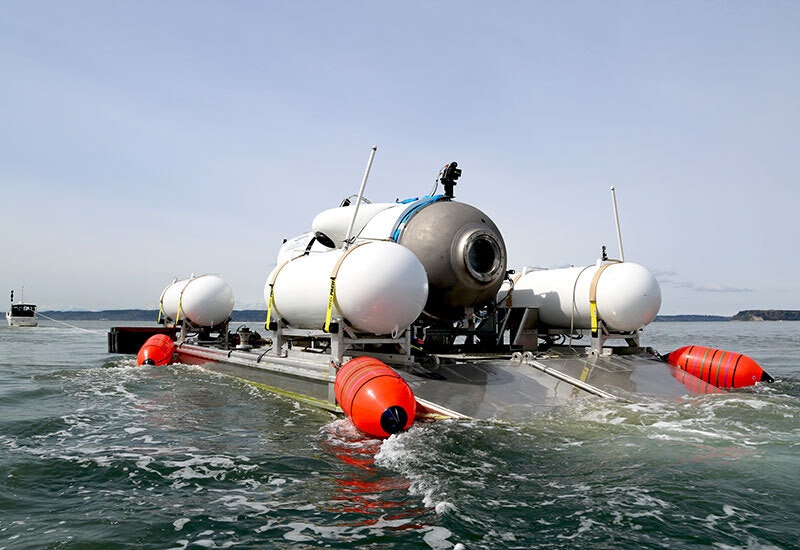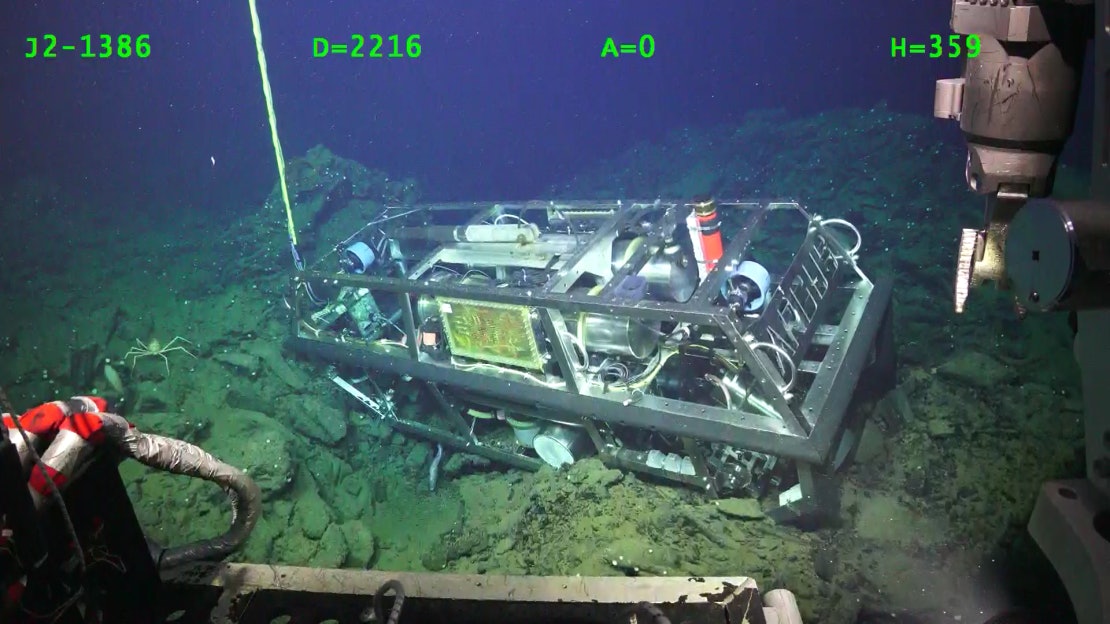
Two summers ago, in August 2021, a remotely operated vehicle called Hercules, designed to explore shipwrecks and strange creatures on the seafloor, got lost.
Hercules became detached from the cable connecting it to its ship. To make matters worse, a smaller assistant craft to which Hercules was tethered, called Argus, was stuck in seabed rubble. But, as a class-certified marine explorer, Hercules was equipped with a simple but layered location technology. Within a day, researchers working to retrieve the vehicle had its precise location.
If OceanGate’s Titan was equipped with the same location technology that Hercules had, it could have changed the story of the search for this missing submersible that descended with five passengers to view the Titanic wreck on Sunday morning. On Thursday, the U.S. Coast Guard announced the discovery of debris nearby the infamous shipwreck, including Titan’s tail cone, about 1,600 feet from the bow of the Titanic. None of the passengers on board could have survived the implosion that seems to have led to the debris.

How Titan could have been found quicker
“The unspoken rule is that no experiments, tech demo, science hypothesis, etc, is more important than human life,” Pablo Sobron, lead scientist of a new deep-sea mission exploring hydrothermal vents, tells Inverse.
Hercules and Argus were successfully fished from depths of more than 2,100 meters below the Pacific Ocean’s surface, about 200 km offshore. Now, they’re back to work. Last month, Sobron tested his new project by having it attached to Hercules and sailed on the Pacific Ocean onboard the ship that lost Hercules two years ago.
“‘Class’ vehicles must meet lots of requirements, including recovery beacons,” Sobron says.
Deep-sea exploration is inherently dangerous. Things can go wrong, and researchers try to come up with solutions for anticipated problems.
“Recovery of deep-sea instruments on the sea bed equivalent to that of the Titanic site is routine when the precise position is known.”
“Recovery of deep-sea instruments on the sea bed equivalent to that of the Titanic site is routine when the precise position is known,” Columbia University oceanographer William Ryan tells Inverse. “I have recovered instruments from the deep seabed as small as a living room chair and as large as a living room couch.”
Ryan also has intimate knowledge of the Titanic site that OceanGate attempted to visit. In 1980, Ryan was involved in the first research effort to locate the Titanic wreckage. According to Ryan, their findings at the time were initially perceived to be too small to be the famed ship. But their results were later confirmed to be the ship when American ocean explorer Bob Ballard officially found the Titanic in 1985.
What should happen when a submersible goes missing
Titan did not seem to be equipped with this routine location technology. Over the course of this past week, numerous reports have made clear that OceanGate, the company that owned and operated Titan, did not comply with industry standards, and the company had been warned multiple times of the dangers that could arise by its non-compliance.
“I understand that OceanGate considers its submersibles experimental platforms and chooses not to go through class certification, so it was not required to meet beacon and other requirements,” Sobron says.
Inverse reached out to OceanGate to confirm it did not have this location technology and did not receive a response in time for publication.

“The fact that this submersible did not have an independently powered acoustic pinger and radio beacon for geolocation is a fault of the operators,” Ryan says.
A pinger transmits a pulse of sound at a repetitive rate. It could be one ping every second or every 10 seconds. This is designed to reach the listening devices in a ship on the ocean’s surface. “A responder listens to a ping from the surface ship and immediately returns its own transmitted signal,” Ryan says. This narrows down the submersible’s direction, distance, and depth.
“The fact that this submersible did not have an independently powered acoustic pinger and radio beacon for geolocation is a fault of the operators.”
“As the ship moves in a broad circle around the suspected location, these distances, and known seabed depth can be used to triangulate on the location of the responder,” he explains. “From my experience, you can determine the location of an object on the bottom with either a pinger or a responder to an accuracy of a few meters.”
That’s if it's still underwater. Before Titan’s debris appeared, rescuers scanned the surface of the Atlantic because, in the event that Titan had surfaced, the passengers may have been short of oxygen since they were bolted in from the outside and couldn’t open the vehicle from the inside. If Titan had proper locating equipment and it had reached the surface, a radio beacon would have enabled rescuers to find its location.
“Using a radio direction finder, the ship can determine where the radio signal is coming from and then moves in that direction until a visual sighting,” Ryan says.
The events that unfolded with Titan are a stark reminder of both the danger involved in deep-sea exploration and the need to follow standard safety protocols.







